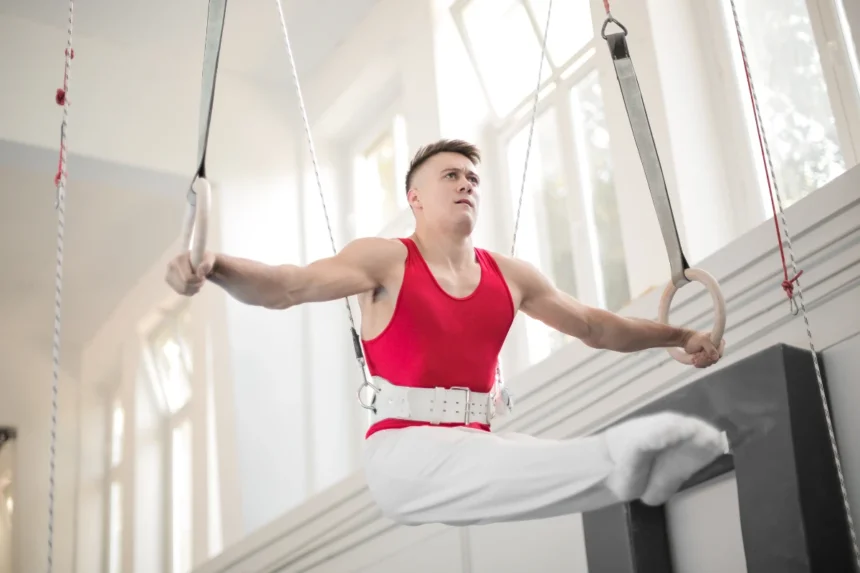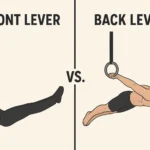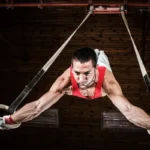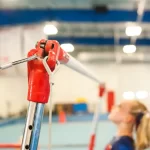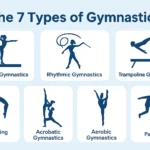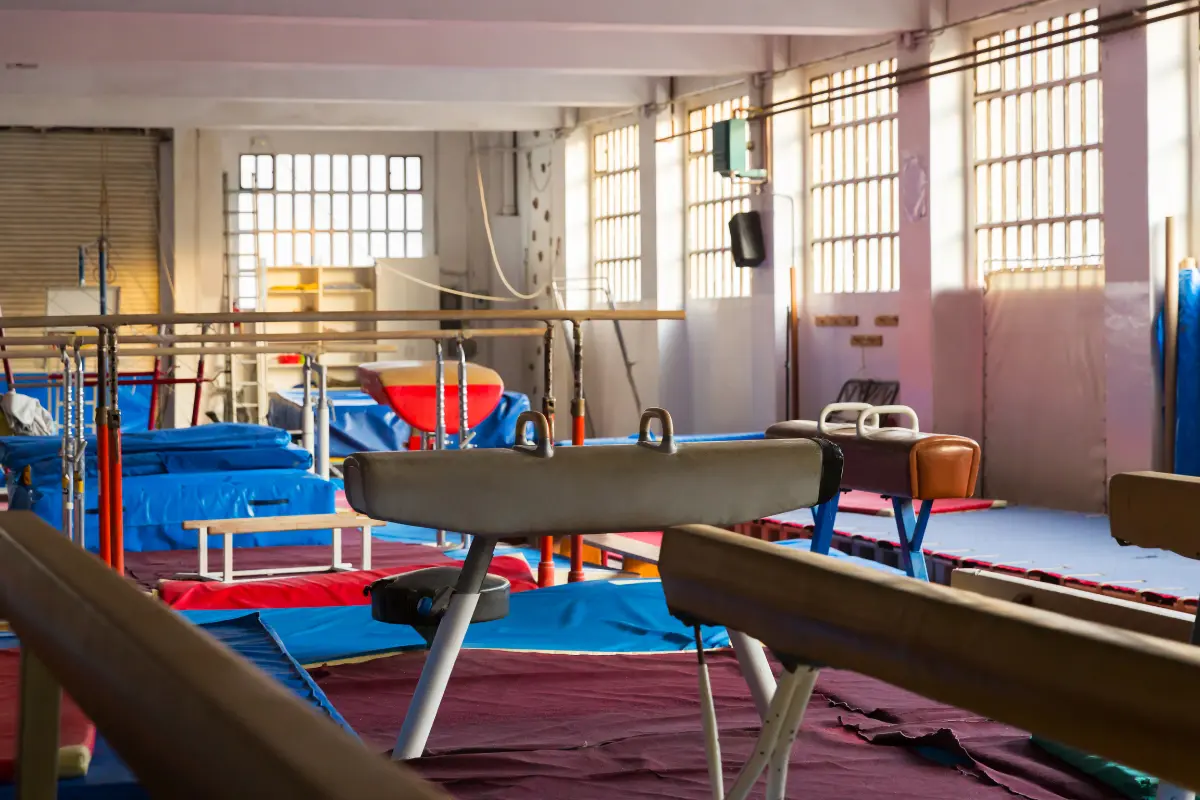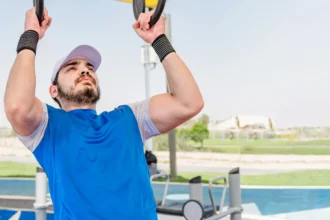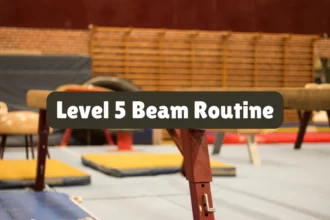Gymnastics rings are among the most demanding apparatus in men’s artistic gymnastics. To master them, athletes need not only raw strength but also balance, control, and years of progressive training.
In the FIG Code of Points, ring elements are categorized by difficulty, from A (easiest) to F (hardest and rarest). Below is a full walkthrough of these elements, with examples of iconic skills at each tier.
A Elements (Fundamentals and Entry-Level Strength Skills)
A-elements are the “foundation blocks.” These moves may be achievable for advanced calisthenics athletes but still require considerable strength and shoulder stability.
- L-sit – A static hold with straight legs extended forward. Great for core strength and control.
- Muscle Up – Transition from pull-up to dip position over the rings. On rings, it’s far harder due to instability.
- Handstand – Pressing into a straight body hold above the rings, demanding balance and grip awareness.
- Handstand Pushup – Adds pressing strength on top of the handstand; requires shoulder power and stability.
- Back Lever – A horizontal, face-down static hold. Typically learned earlier than front lever because of biomechanics.
- One-Arm Chin-Up – Pure pulling strength on rings with one arm; harder to balance than on a bar.
- Front Lever – A face-up horizontal hold, heavily taxing the lats, abs, and scapular stabilizers.
- 360 Pull – A dynamic transition move, pulling and rotating around the rings in a full circle.
B Elements (Intermediate Power & Stability Skills)
B-elements require stronger pressing mechanics, deeper mobility, and the ability to stabilize under heavy joint pressure. These are the gateway skills toward true “strength holds.”
- Press Handstand (Straight Body, Bent Arms) – Combines press mechanics with body alignment.
- Press Handstand (Bent Body, Straight Arms) – A variation focusing more on hip flexion control.
- Forward Roll (Slow, Straight Body) – A controlled forward roll on rings, testing shoulder integrity.
- Wide L-sit RMU (Ring Muscle-Up) – A wider, harder version of the basic muscle-up with legs extended.
- V-sit – Similar to an L-sit, but with legs lifted higher, placing more load on hip flexors.
- Straddle Planche – A planche variation with legs straddled for balance and reduced leverage.
- Iron Cross – The iconic strength hold: arms extended straight out to the sides, body suspended.
- L-Cross – A hybrid between L-sit and Iron Cross, mixing static core and shoulder demands.
C Elements (Advanced Static Strength Moves)
At this level, gymnasts transition from strong basics to high-tension holds and presses. These skills mark the difference between elite strength specialists and general ring athletes.
- Cross Press – Transition from bent-arm support into an Iron Cross.
- V-Cross – A cross hold performed with legs in a V-position for added difficulty.
- Planche – A full horizontal body hold, face down, with arms straight. Tremendously taxing on shoulders.
- Planche Press – Transition pressing into a planche from below.
- Inverted Muscle Up – Pulling from an inverted hang through to support above rings.
- Li Xiaoshuang – Named after the Chinese gymnast, this skill transitions to Butterfly with straight arms.
- Inverted Cross – Similar to the Iron Cross, but held inverted — arms extended while body hangs upside down.
D Elements (Elite Strength Presses and Transitions)
D-elements bring in transitions between high-value static holds. Mastery here requires years of dedicated strength training.
- Tsukahara 3 (V-Cross Press) – A press motion into V-Cross.
- Iron Cross Press to Planche – Transition from Cross into Planche — both brutal in isolation.
- Inverted Cross Press – Pressing movement into the inverted cross position.
- Maltese – A horizontal hold with the body extended straight and arms pressed low at hip level.
- Nakayama – Momentary Back Lever rolling forward into Iron Cross.
- Azarian – A slow backward roll finishing in Cross.
- Butterfly – A horizontal inverted hold with arms slightly angled, precursor to Balandin moves.
- Maltese Press to Planche – Linking two of the hardest horizontal holds.
- Yan Mingyong – Azarian transitioned into Planche, named for the Chinese world champion.
E Elements (Rare, Iconic Power Skills)
E-elements are reserved for world-class strength specialists. These transitions combine multiple high-value holds, often in sequence.
- Tsukahara 2 – A front lever pull transitioning to V-Cross.
- Colak – Butterfly pressed into V-Cross.
- Cross Press to Inverted Cross – Linking Cross into its inverted form.
- Bhavsar – Momentary front lever pull transitioning into Maltese.
- Jovtchev – Inverted Cross lowered into Maltese; named after Yordan Jovtchev, a rings legend.
- Maltese Press to Inverted Cross – Demands extreme pushing and pulling balance.
- Balandin 3 – Butterfly pressed into Planche.
- Balandin 1 – Butterfly pressed into Maltese.
- Petrounias – Front lever pull transitioning into Inverted Cross; named after Greek Olympic champion Eleftherios Petrounias.
- Azarian to Maltese – Classic Azarian roll finishing in Maltese.
- Van Gelder – Maltese into back lever into planche (or reverse sequence).
- Victorian – A horizontal hold even lower than Maltese, body held parallel with arms behind hips.
F Elements (and Beyond — the Peak of Rings Strength)
The rarest skills, F-elements push human strength to its absolute limit. Only a handful of gymnasts in history have performed them in competition.
- Balandin 2 – Butterfly to Inverted Cross.
- Zanetti – Back lever pull transitioned into Maltese; named for Arthur Zanetti, 2012 Olympic champion.
- Carmona – Back lever pull pressed into Inverted Cross.
- Zahran – Back lever momentarily held into Victorian.
- Azarian to Victorian – Combining the classic Azarian roll into the hardest static hold.
- Tulloch 2 – Butterfly pressed into Victorian; named after Britain’s Nile Wilson’s teammate, Courtney Tulloch.
- Victorian to Zahran – Linking two of the hardest statics in gymnastics.
- Caruso – Front lever pull with straight arms pressed into Victorian.
Bottom line
Mastering even A or B elements puts you in elite territory compared to most athletes. But reaching D, E, or F elements represents a level of strength seen only in world-class gymnasts and rings champions.
For calisthenics athletes, these rankings serve as a roadmap of progression. For gymnasts, they mark milestones of artistry and dominance on one of the sport’s most demanding apparatus.
